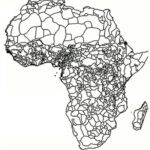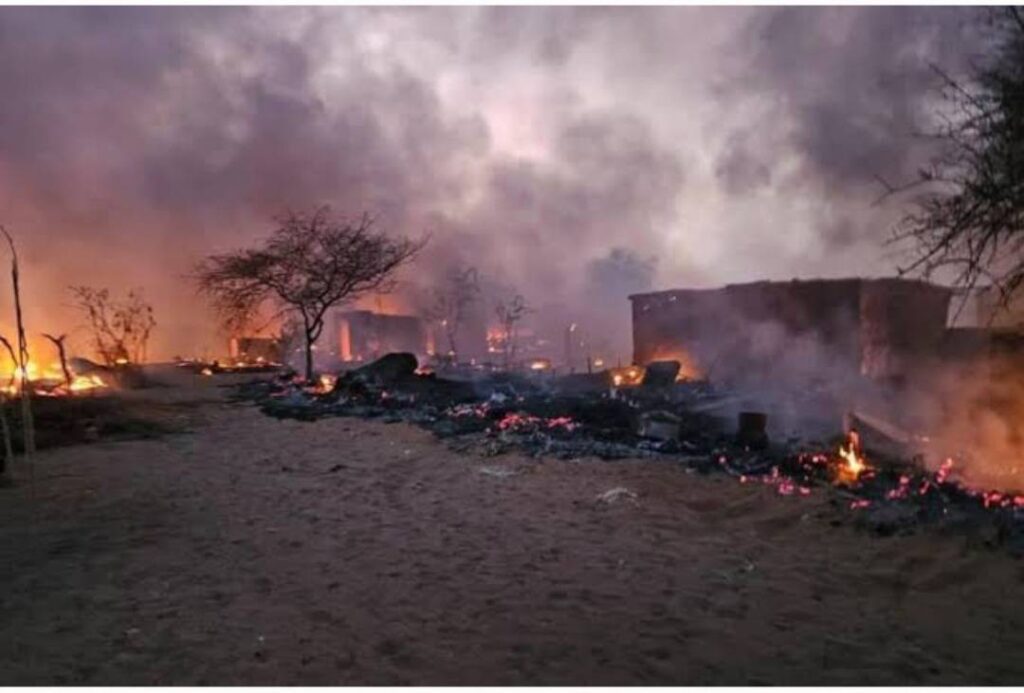As the number of armed civilian groups increases, the conflict in Sudan intensifies, leading to greater destruction and diminishing prospects for peace. He who does not fight, flees. The conflict in Sudan initially started as an internal dispute within the army, but after fourteen months later tens of thousands of civilians have joined the battle.
“You cannot escape the bombs of the government army, not the shelling of the RSF, not the robberies and rapes by riotous civilian groups, you are trapped,” laments teacher Abdulla Ibrahim (40) over the phone. He and his family have just managed to leave the besieged city of El Fasher. The RSF he is talking about are the Rapid Support Forces of Mohamed Hamdan Dagalo, alias Hemedti. On the other hand, in the growing conflict in Sudan, there is the government army of General Abdel-Fattah Burhan.
El Fasher remains the final major city under the control of Burhan’s forces in the western Darfur region. The population, which includes both the original inhabitants and those from refugee camps, exceeds two million people. Those who sought refuge in the city were victims of past ethnic cleansing carried out by Arab militias against African communities. The conflict has forced ten million people to flee across Sudan, with hundreds of thousands seeking shelter in neighboring countries. The impact of the violence is evident in the destruction of schools, hospitals, museums, office buildings, bridges, homes, and even mosques, caused by drones, bombs, and artillery fire. While the exact number of casualties is uncertain, US envoy Tom Perriello recently estimated the death toll at 150,000. The UN has issued warnings about the looming threat of famine, further exacerbating the crisis of ethnic cleansing. “Citizens are unprotected and treated based on their ethnic identity,” Alice Wairimu Nderitu, the UN adviser on the prevention of genocide, said.
Suffering
“El Fasher is half under the control of government soldiers and affiliated forces, the other half is under the control of the RSF and militias,” says teacher Abdulla Ibrahim. “The suffering of the citizens is beyond the imagination of the human mind. Food is becoming increasingly difficult to obtain, and there is also a shortage of water. In an effort to provide water to households, a few people use small water tankers attached to donkeys and horses. A bomb hit my neighborhood, killing those who worked on transporting water.”
Journalist Mohamed Suleiman working for the Sudanese radio station Dabanga tries to map the daily developments in and around El Fasher by telephone. “President Burhan’s government army is in its barracks, Hemedti’s paramilitary RSF takes up positions by entering civilian homes and then uses ground weapons to get closer to the army barracks,” he said. “The Army Air Force is conducting indiscriminate airstrikes against the RSF in the residential areas. According to eyewitnesses, this causes numerous casualties.”
El Fasher’s garrison is much larger and has more firepower than government encampments previously overrun by the RSF in Darfur’s major cities. That is why the battle for El Fasher has been going on for so long and that its capture by the RSF would mean a major victory.
The fact that the government forces are relatively strong is due to thousands of newly recruited civilians and the deployment of the Joint Force, a coalition of rebel groups that concluded a peace pact with the government in 2020. Fighting alongside the RSF are tens of thousands of fighters of Arab descent recruited throughout the Sahel who, they have been promised, can shop for free in Darfur. Due to the expansion of the war theater with all these new, often undisciplined warriors, plundering and rape have become part of the fighting methods.
Mass grave
The participation of more and more armed civilian groups makes the war more destructive. This largely takes place out of sight of the media, but in the village of Wad al-Noura in Central Sudan, a massacre received a lot of publicity due to videos on social media. Earlier in July, residents dug a mass grave for 140 residents in a long, straight line. 35 children’s bodies among them. Without providing training, the government army had distributed weapons to residents. When the RSF attacked, everyone suddenly became a target. The government army did not come to their aid.
The government army has been planning a major counter-attack for months, but has had virtually no success. Around El Fasher it this week killed Ali Yagoub, a major RSF commander, during a failed RSF offensive from the south of the town. The RSF surrounds the city of El Obeid, south of Khartoum, and operates in and around the capital. This week it took the town of El Fula, district capital of West Kordofan.
The government side has become a motley crew of fighters who despise the rough, often unskilled RSF fighters. Political parties participate in the coalition around President Burhan and former rebels and militias from Darfur and Eastern Sudan are fighting there. Employees of President Bashir, who was deposed in 2019, are regrouping around this partnership and the commitment of these Muslim fundamentalists is growing. The battlefield is becoming increasingly less clear and the chance of peace smaller. What began as a civil uprising in 2019 has now descended into a full-blown civil war. The hopes for a new era of freedom have been dashed, and the looming threat of fragmentation, akin to a second Somalia, looms large.

